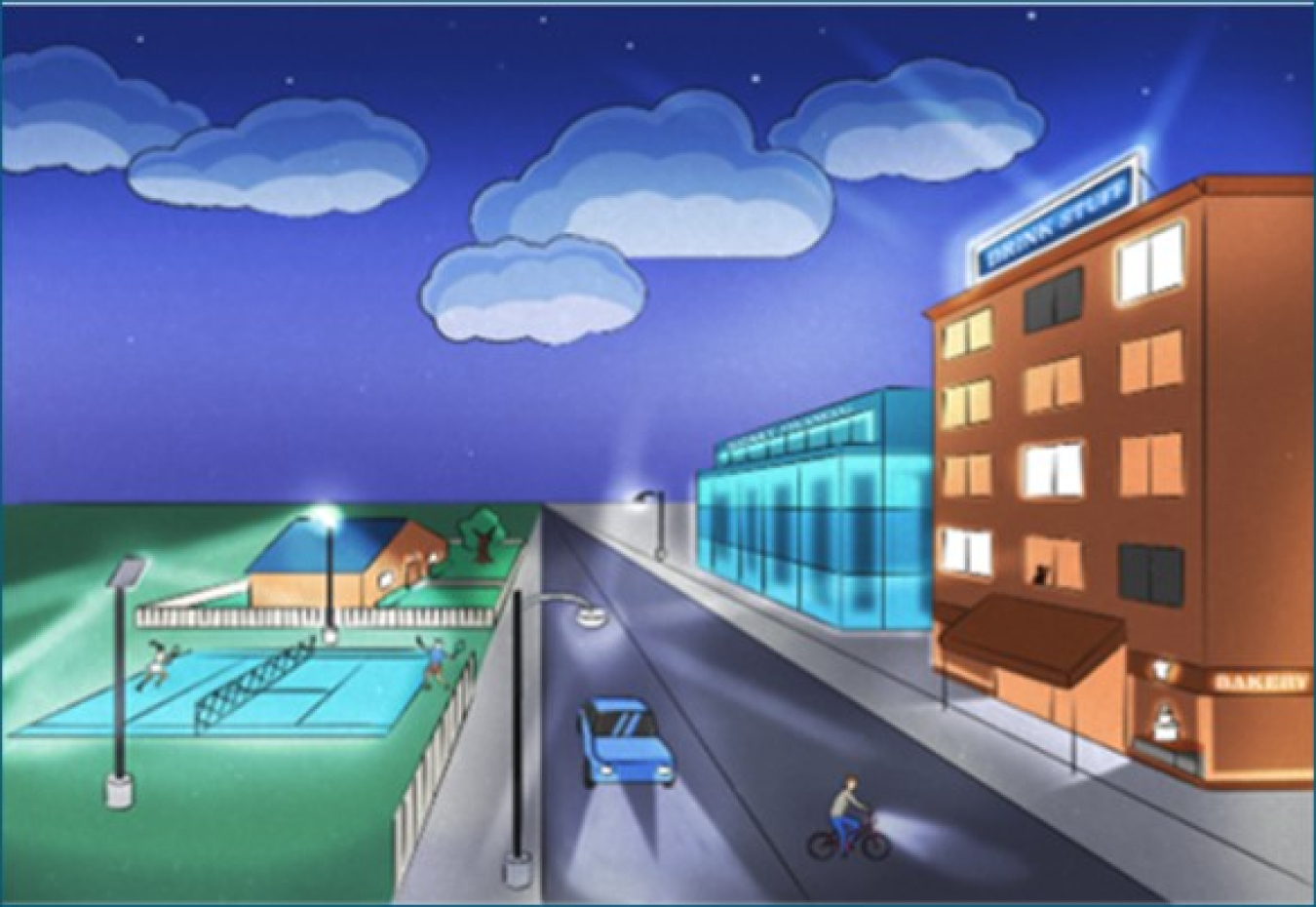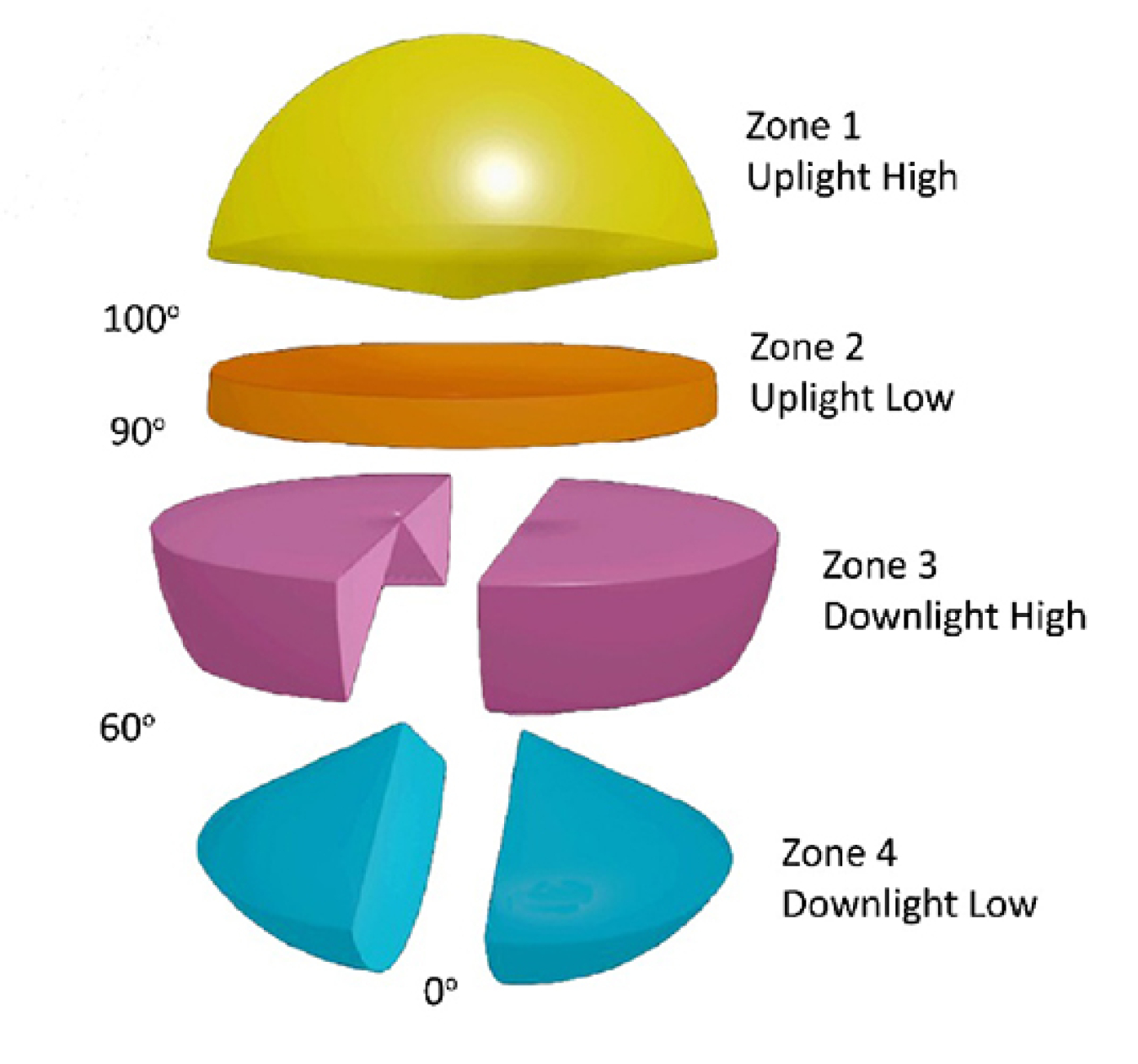Causes of Sky Glow, Evaluation Method, Recommendations Detailed in TM-37
Global urbanization has led to increases in the use of light at night. One byproduct is sky glow, the accumulated light produced by a populated area that interacts with particulates in the air and manifests as a noticeable light dome over that area, obscuring local views of the night sky. The health and environmental impacts of sky glow, which falls under the broader term “light pollution,” have been debated in the past decade, especially with the conversion of much outdoor lighting away from low- and high-pressure sodium lamps to white light-emitting diodes (LED). The prevalence of LED street and area lighting has been criticized for their greater content of wavelengths in the portion of the visible range between 380 and 550 nanometers. Because the natural night sky has relatively low levels of wavelengths within this range, any such addition from human-based sources is a significant departure from natural conditions.
DOE Studies
The U.S. Department of Energy (DOE) has contributed to better understanding sky glow for many years. DOE efforts include release of the 2017 study, An Investigation of LED Street Lighting’s Impact on Sky Glow, as well as ongoing technical support and leadership in efforts to characterize the issue, its causes and impacts. DOE investigations generated results from 215,000+ runs of a sky glow model, which in turn informed development of a Sky Glow Comparison Tool available by request from DOE. The tool enables comparison of sky glow impacts from LED lighting relative to high-pressure sodium (HPS) lighting, considering the effect of light output and spectrum under a defined set of input conditions. The Sky Glow Comparison Tool can help users identify the most effective means for addressing sky glow, including specifying the correct amount of light for the site and application, considering dimming during unpopulated portions of the night, and eliminating light directed upward from luminaires.
ANSI/IES TM-37
Other important sky glow efforts include the convening by the Illuminating Engineering Society (IES) of a committee of leading experts—including astronomers, National Park Service scientists, and others—to study issues around the impacts of human-based sources of light at night. Their efforts over recent years culminated in an IES Technical Memorandum (TM) entitled Description, Measurement, and Estimation of Sky Glow: An American National Standard. This TM, designated ANSI/IES TM-37-22, describes in clear and concise terms the causes, characteristics, and potential impacts of human-based sky glow. TM-37 then goes further, providing a framework for calculating the contributions of individual light sources to sky glow, along with general recommendations for reducing sky glow through more appropriate selection, placement, and usage of light at night.

TM-37 includes identification of the many contributors to light pollution in the night sky and clears up common misconceptions about the role of LEDs in skyglow. Any light source that permits “uplight”—that is, light emitted at an angle greater than 90 degrees from directly below the light source—contributes more to sky glow than downward-directed streetlighting. As an inherently directional light source, LEDs enable the elimination of uplight.
TM-37 concludes with Five Principles for Responsible Outdoor Lighting, developed by IES and the International Dark-Sky Association (IDA):
- Eliminate unnecessary lighting
- Eliminate uplight
- Reduce lumen output
- Control spectral content
- Set appropriate expectations
This new TM is of use to a broad audience: civil engineers or lighting designers seeking to understand the impact of their proposed outdoor lighting installations; city officials dealing with light trespass complaints; manufacturers developing the most useful lighting products; architects designing buildings (windows in buildings are major contributors to sky glow); dark skies advocates and environmentalists in search of answers to light pollution causes; and others.
ANSI/IES TM-37-21 was a core resource used by the DesignLights Consortium® (DLC) during the development of its LUNA Technical Requirements, which define performance parameters for controllable outdoor SSL luminaires to minimize sky glow and light trespass, while increasing energy efficiency. “The DLC standard practice is to reference industry technical standards in the development of our technical requirements and to use these standards to benchmark minimum requirements and to evaluate where we can push the boundaries of performance to achieve market transformation,” said Dorene Maniccia, director of market strategy and development for the DLC. “Our recently released LUNA policy references IES/ANSI TM-37-21 and directs readers to the standard to learn more about dark sky design guidance, recommendations for reducing sky glow, and impacts of light distribution on sky glow and light trespass.”
ANSI/IES TM-37-21 is an important reference for managing outdoor light at night, helping communities to safely light streets and areas while preserving natural environments and views of the night sky for everyone.


